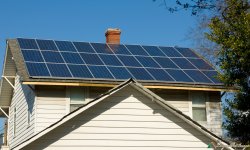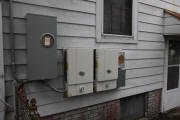James Lemon
Well-known member
What is ROE ? A good return on energy is what I expect when it comes to utilizing energy sources. Recent studies have shown that although we have invested in energy efficient homes in the last 15 years or so, our energy consumption has gone up and will continue on, well into the future.
Nearly half of the energy consumed in U.S. buildings in 2021 was used for heating and cooling, according to modeled estimates. Although we save with energy efficient appliances we also use more on hot tubs, other gadgets and such. I personally work at conserving energy as much as possible, like turning down the heat when I leave home, and simple things like that.
Fortunately I can track my electrical usage as well as other energy consumption. The following is a graph of my electrical usage compared to my neighbors for the last billing period . Keep in mind that all these homes are are built to the same efficiency standards and I do not use any solar power or any other types of energy sources. My usage is depicted in light blue.

Nearly half of the energy consumed in U.S. buildings in 2021 was used for heating and cooling, according to modeled estimates. Although we save with energy efficient appliances we also use more on hot tubs, other gadgets and such. I personally work at conserving energy as much as possible, like turning down the heat when I leave home, and simple things like that.
Fortunately I can track my electrical usage as well as other energy consumption. The following is a graph of my electrical usage compared to my neighbors for the last billing period . Keep in mind that all these homes are are built to the same efficiency standards and I do not use any solar power or any other types of energy sources. My usage is depicted in light blue.



